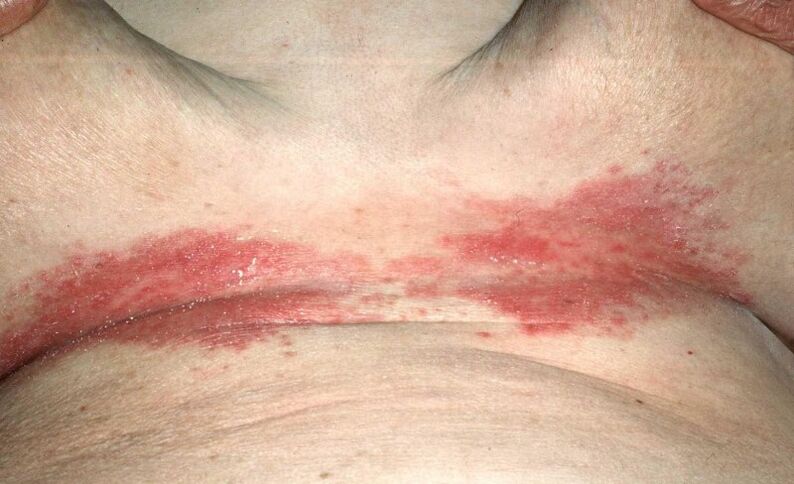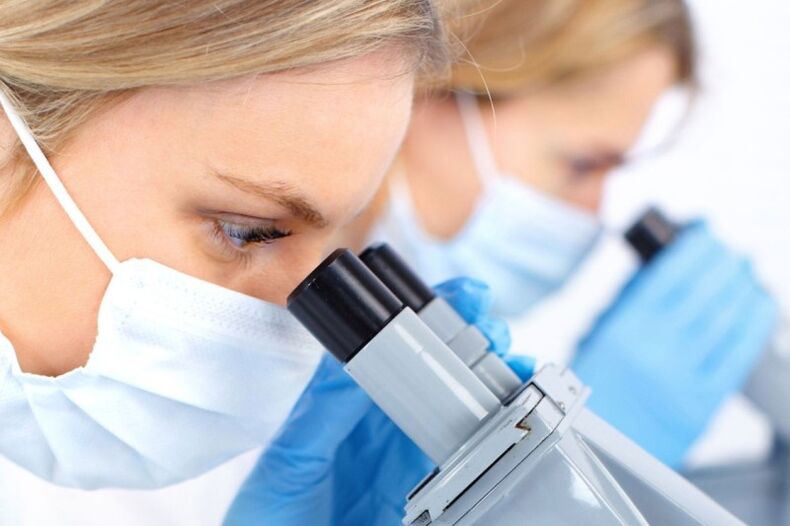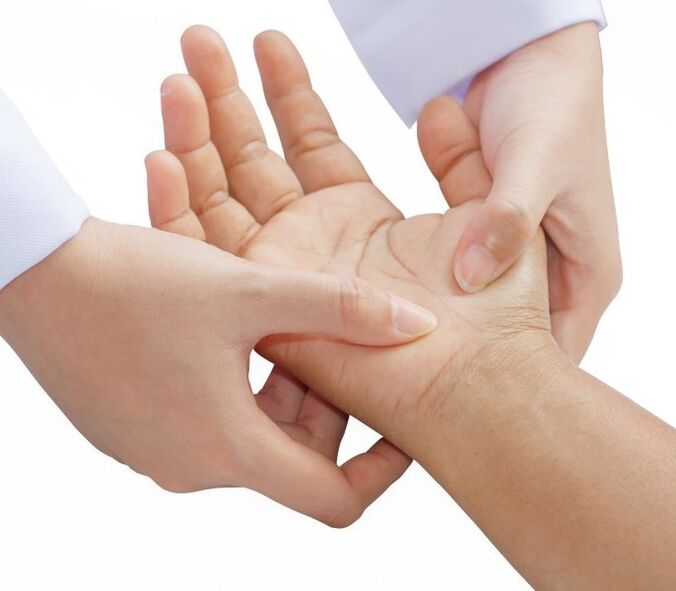Psoriasis is a common skin disease of neurogenic etiology. The disease is not contagious and is not passed from person to person. Most often, psoriasis becomes chronic due to its latent course. Usually the disease develops in people under the age of 30, but it can also occur in old age.
External symptoms may be absent, the clinical picture of the disease depends on its type and stage. Most often, psoriasis begins with the appearance of bright red spots, which are covered with dry scales, which is why the disease has a second name - squamous lichen.
Skin spots can be of different sizes, some can blend into an affected area of the skin and protrude significantly above the surface.
Psoriasis causes physical and mental discomfort to the patient, the disease periodically worsens, in between, a period of remission occurs, and the symptoms subside.
The skin patches are called psoriatic plaques or papules, most often affecting the elbows and knees, extending to the head and lower back. Plaques can affect other parts of the body, depending on the type of disease. Treatment can last more than a year.
Causes of the appearance of the disease

Psoriasis causes several causes associated with various factors, both external and internal:
- a common cause is genetic inheritance;
- the disease can develop due to constant stress, anxiety, shock, depression and mental disorders;
- various autoimmune diseases and a malfunction of the immune system create ideal conditions on the surface of the skin for the onset of the disease;
- Chronic psoriasis can also cause metabolic disorders, as well as a malfunction of the endocrine system.
The type of psoriasis and its course depend on the etiology of the disease.
Classification of psoriasis

The disease has several forms, on which the external manifestation and symptoms depend:
- The most common form of the disease is squamous psoriasis. The surface of the skin is covered with red or pink spots covered with scales. They are in stark contrast to healthy skin, denser and elevated above the underlying surface. The scaly coating comes off easily and, if disturbed, begins to bleed, causing severe itching and burning. When the disease worsens, the spots can grow and merge with each other, forming large areas of damage.
- Guttate psoriasis looks different, the spots can be pink or purple, during the period of exacerbation they become brighter. The scales may be larger and resemble drops in appearance; they can also merge in large areas.
- Another form of psoriasis that affects only the places of the folds and folds of the skin: elbows, armpits, areas under the fat folds of the abdomen or chest, in the groin. The spots are smooth, uniform, do not itch and do not have scales. If there is friction with clothing in the affected areas, the surface of the stains is easily damaged.
- The chronic form of nail psoriasis is also common, mainly the nail plate of the fingers or toes is affected. Nails lose their shape, become deformed and change color. The nails begin to thicken and exfoliate, the disease can lead to the loss of the nail plate. In the initial stage, nail psoriasis is easily mistaken for a fungal infection, so you should see a doctor for a proper diagnosis and treatment.
- The most serious form of the disease is pustular, characterized by the appearance of blisters filled with light-colored fluid, which can be easily broken by rubbing clothing. When the pustules are destroyed, pus forms in them and a secondary skin infection occurs. This form of psoriasis is dangerous because it can cover almost the entire body, aggravating its course.
- Rheumatoid psoriasis affects not only the surface of the skin, but also the joints and periarticular soft tissues. This mainly affects the knee, shoulder, and hip joints. Injuries are manifested not only by external symptoms, but also by pain within the joint, which brings additional suffering to the patient. If the hands or feet are affected, swelling of the fingers is observed, their sensitivity decreases, and deformation begins. In the most serious and neglected form, the patient can lose sensation in the extremities and become disabled.
All these forms can progress alone or they can appear together, it all depends on the severity of the disease.
Stages of psoriasis

The chronic form of the disease has different stages, each of which has its own symptoms and characteristics:
- with a progressive stage, the spots, covered with scales, appear quickly and increase in size. They are usually red in color, but can change color depending on the form of the disease. The skin in these places itches a lot, burns and hurts;
- at a stable stage, the disease does not cause painful sensations, flows measured, the scales gradually grow, they can periodically merge;
- With a regression stage, the papules can resolve themselves, they do not cause any concern other than the external signs.
Psoriasis is a chronic disease that alternates between exacerbation and remission.
Reasons for exacerbation.

An exacerbation of the disease can be due to many reasons, both external and internal:
- prolonged exposure to cold with frostbite of the skin;
- violation of the hormonal background of the body during puberty, pregnancy or menopause;
- long-term therapy with certain drugs (antibiotics), self-medication, violation of the dose when taking complex vitamins and herbal supplements;
- the disease can be aggravated by climate change or exposure to sunlight;
- alcohol abuse can not only provoke an exacerbation of the disease, but also complicate its course;
- trauma, burns, frostbite and other mechanical damage to the skin always provoke an exacerbation of psoriasis;
- Infection with viruses and bacteria can cause an outbreak of disease; Sometimes a common respiratory disease causes an exacerbation of skin diseases.
The rheumatoid form of psoriasis has a seasonal exacerbation:
- in summer - in case of being in the sun;
- in winter, due to hypothermia.
The ultraviolet ray helps to heal the papules, but the infrared rays of the sun irritate the skin.
Psoriasis is diagnosed without much difficulty, the disease has vivid symptoms, additional studies are carried out in the form of blood tests and a skin biopsy to exclude other diseases.
Treatment

Today's medicine has made great strides in treating skin conditions, including psoriasis; There are several methods that can be used to treat an advanced form of the disease. The doctor determines the method of treatment on a purely individual basis, depending on the form, stage, causes and symptoms. Treatment is always carried out comprehensively, combining pharmacotherapy and physiotherapy.
Pharmacological treatment includes the use of both internal and external drugs:
- to eliminate skin pathologies, salicylic acid, sulfur, dithranol and urea-based ointments are used;
- glucocorticoid ointments;
- lotions for the treatment of the scalp.
At the stage of exacerbation, hormonal ointments are used to eliminate the inflammatory process, treatment is always started with the least strong. If the disease begins to progress again, use strong fluorinated agents. They are used for two weeks to achieve the result.
For the elderly and children, ointments are used with the least side effect.
With an increase in dosage, dithranol-based ointments are prescribed to eliminate the inflammatory process, itching and swelling.
Preparation with kalcipotriolit has a direct medicinal effect on the factors that provoke pathogenesis. It has anti-inflammatory and immunomodulatory effects. Usually a course of treatment in two months has a noticeable positive result, the rash on the skin can completely disappear. This remedy does not have any side effects in the form of skin atrophy and has a persistent effect. The drug is used to treat a tear-shaped form of psoriasis, which is difficult to treat.
All medications must be alternated, otherwise addiction can occur and the body will stop responding to them.
Aromatic retinoid treatment is also considered effective.
In addition to drug therapy, a number of requirements must be met for successful treatment:
- follow a dietary diet;
- take the necessary vitamins under the supervision of a doctor;
- avoid stressful situations, in case of a depressive state, you should consult a doctor to prescribe the necessary funds;
- protect affected areas from contact with chemicals as much as possible, especially hands and nails;
- wear only cotton clothing so as not to cause additional skin irritation;
- do not consume alcoholic beverages or sweets, and contact with allergens should also be avoided.
If all the recommendations and rules of treatment are followed, it is possible to achieve remission of the disease and, in some cases, a complete cure.























